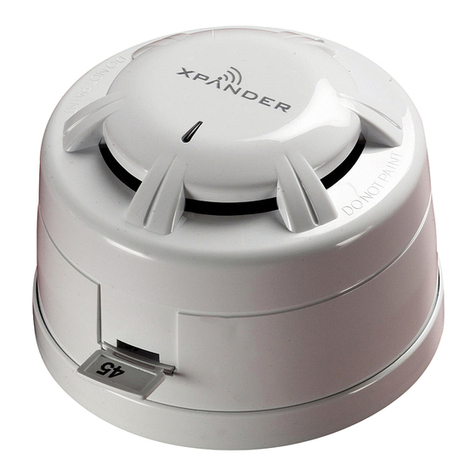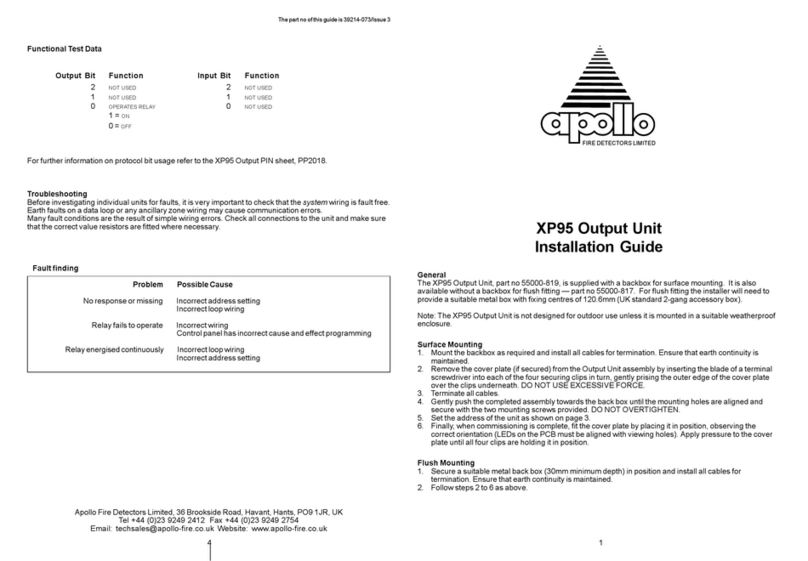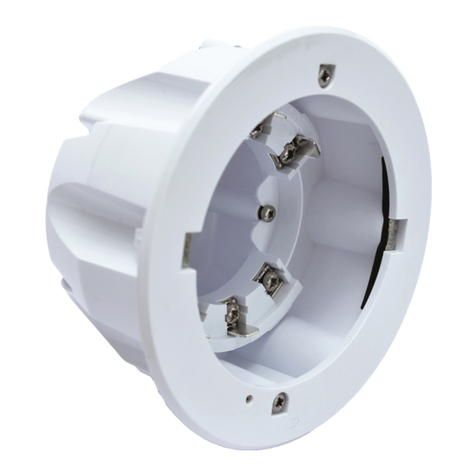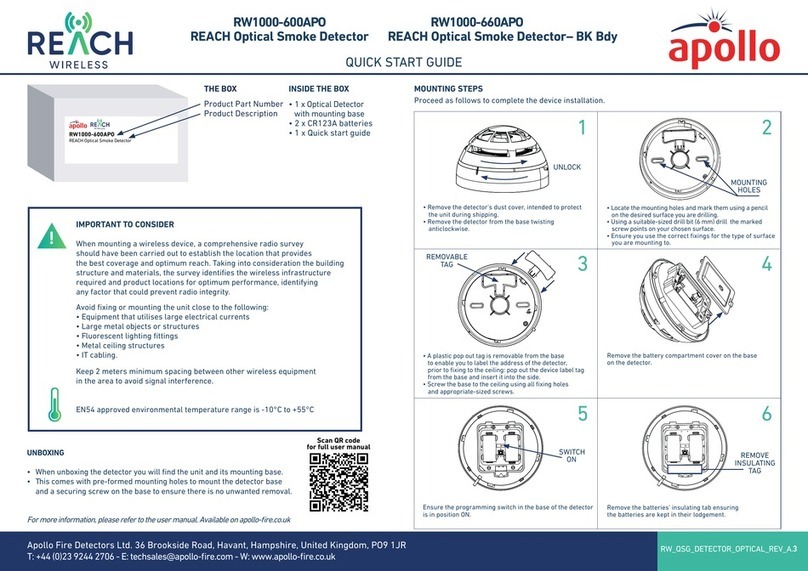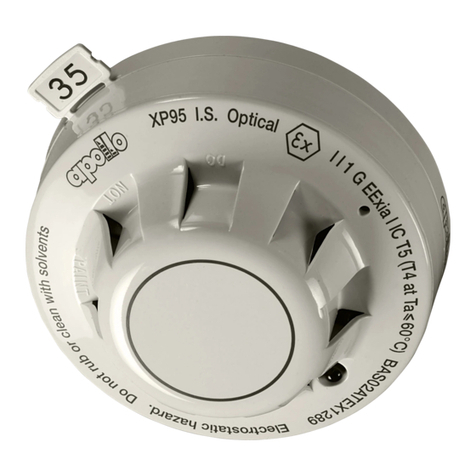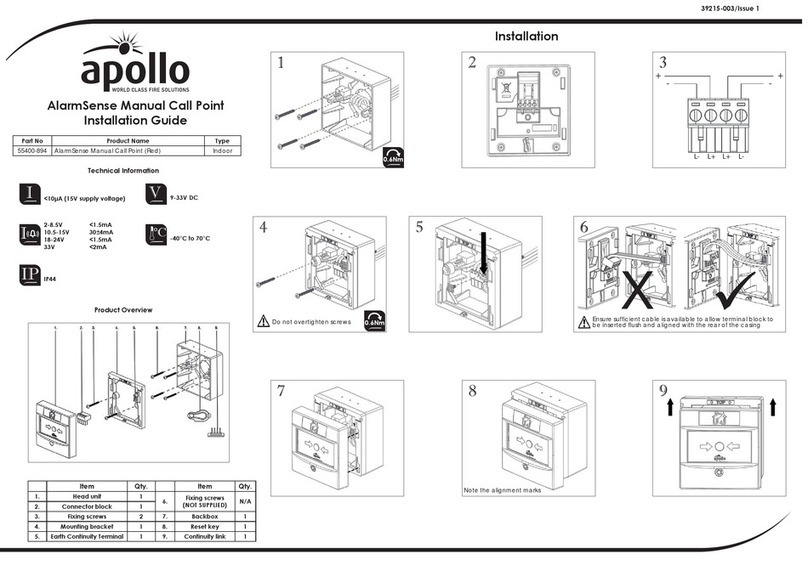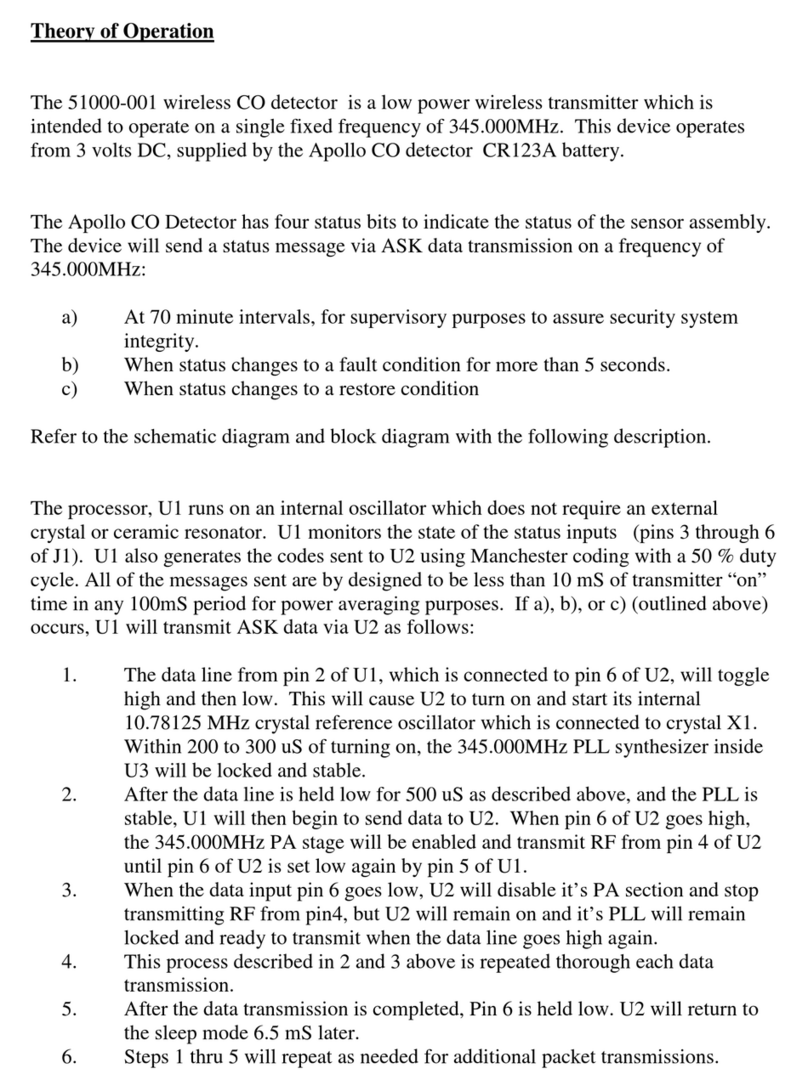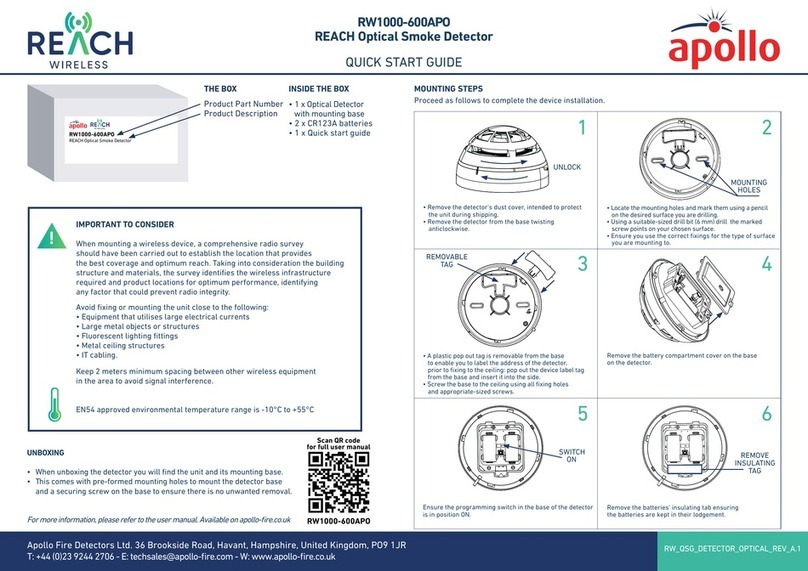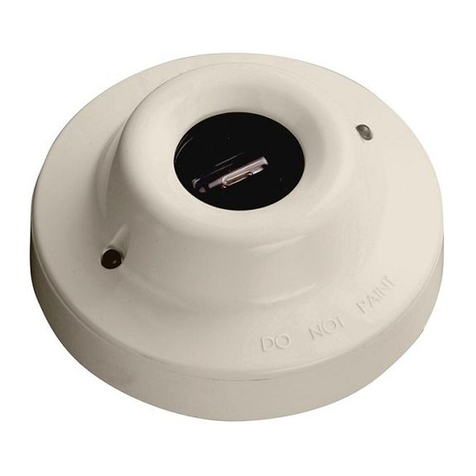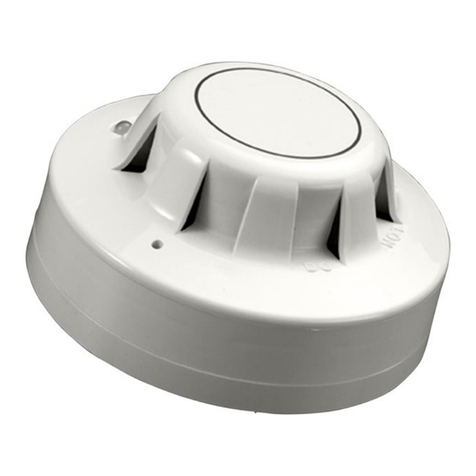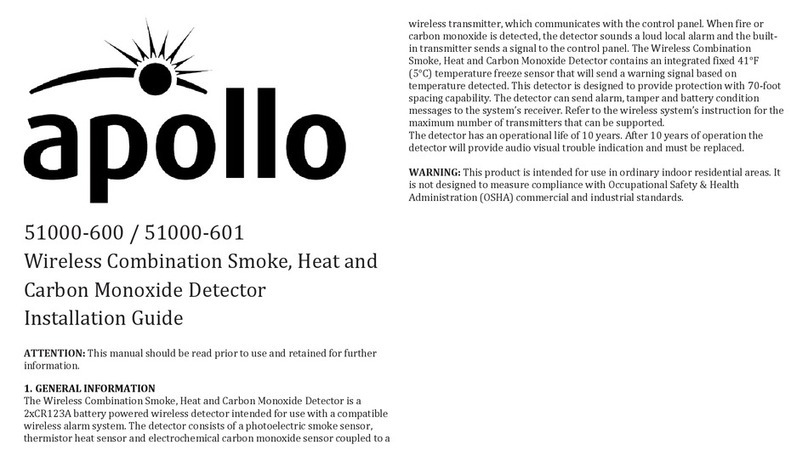
5
CONVENTIONAL DETECTORS
When would I use a multisensor?
Multisensor smoke detectors have a heat
sensing element which makes them more
sensitive if a fire develops heat as well as
smoke. This speeds up the response of
the detector in certain fires where heat is
generated rapidly, for instance in test fire
TF5, which is an open, flaming liquid fire
in which n-heptane is burned.
Multisensor smoke detectors are
recommended for open flaming fire risks.
If there is any doubt as to whether an
optical detector or a multisensor smoke
detector should be used it is wise to fit a
multisensor smoke detector.
Where would there be a need to install
heat detectors?
Heat detectors should be used if it is not
possible to use smoke detectors. This
will be the case for example in kitchens
and smoking areas and where normal
industrial processes produce substances
which could be mistaken for smoke by
a smoke detector, eg, flour mills, textile
mills or loading bays with diesel-engined
vehicles.
The type of substance encountered here
would cause frequent false alarms if
smoke detectors were fitted, so a heat
detector is used instead.
Should I use optical detectors to detect
smoke in all applications?
Optical detectors have long been
recommended as good general purpose
smoke detectors. Laboratory tests
have been carried out to compare the
performance of optical detectors in
the standard test fires described in the
European standard EN54.
The results of these tests are given in
Fig 1. The graph shows the acceptable
response in terms of smoke density which
is given as ‘m’ on the y axis. Detectors
must respond before the end of test which
is an ‘m’ = value of 2. The performance
of Orbis detectors is given as a solid line
which shows how evenly the optical
detectors respond to the test fires.
If detectors respond too quickly (the lower
shaded portion of the graph) they may be
too sensitive and hence likely to generate
false alarms.
If detectors respond too slowly (the upper
shaded portion) they are in danger of not
changing to the alarm state before the
end of test.
An even response in the centre is the
ideal response.
2.00
1.50
1.00
0.50
0.00 TF2 TF3 TF4 TF5
Poor
Test Fires
Acceptable
values
2.00
1.50
1.00
0.50
0.00 Orbis Optical Orbis Multisensor
Poor
Test Fires (TF5)
Too sensitive
Too sensitive
Acceptable
values
Optical density m(dBm–1)Optical density m(dBm–1)
TF5
Comparisons of response between
Orbis Optical & Multisensor
Figure 2 © Apollo Fire Detectors Limited 2004/JDR
2.00
1.50
1.00
0.50
0.00 TF2 TF3 TF4 TF5
Poor
Test Fires
Acceptable
values
2.00
1.50
1.00
0.50
0.00 Orbis Optical Orbis Multisensor
Poor
Test Fires (TF5)
Too sensitive
Too sensitive
Acceptable
values
Optical density m(dBm–1)Optical density m(dBm–1)
TF5
Orbis Optical detector response to Test Fires
Figure 1
© Apollo Fire Detectors Limited 2004/JDR
How are heat detectors classified?
EN54 classifies heat detectors according
to the ambient temperature in which
they will be working and according to
whether they may be tested as ‘static’
detectors (changing to alarm at a preset
temperature) or ‘rate-of-rise’ (changing to
alarm at a preset increase of temperature).
Heat detectors may also be marketed
without either classification; but then the
detection characteristics are unknown.
All Orbis heat detectors are tested and
classified as either static or rate-of-rise.
So what is the best way to choose a heat
detector?
To make things easier we have produced
a flow chart which is shown on page 10.
www.acornfiresecurity.com
www.acornfiresecurity.com
